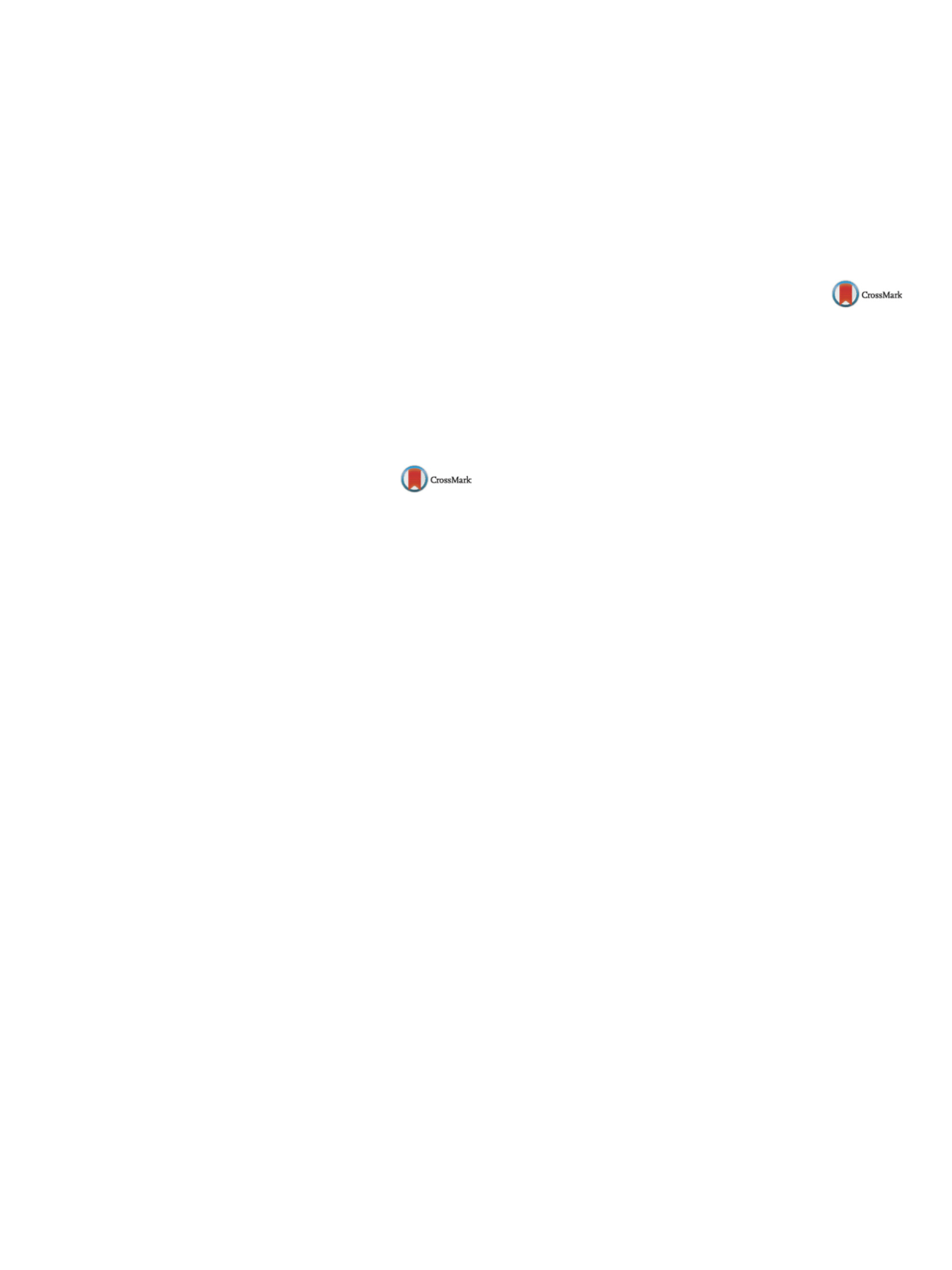

25th European Congress of Psychiatry / European Psychiatry 41S (2017) S69–S105
S105
Methods
A total of 167 HC participated in theMRI study and filled
the Schizotypal Personality Questionnaire (SPQ). We pre-processed
MRI datawith SPM8 and DARTEL. Then, we used thalamic greymat-
ter volumes (GMV) as features in the random forests prediction of
disease status at the single subject level. Finally, we tested SPQ
scores differences between FP and TN with Mann-Whitney test.
Results
The classification accuracy was 71%. FP had greater SPQ
scores compared to TN (
P
= 0.007).
Conclusions
Classification accuracy of our classifier in an inde-
pendent sample suggests that thalamic GMV patterns are
reproducible markers of disease status. Furthermore, the present
results also suggest that variability of thalamic GMV patterns
in HC may have relevance for subclinical phenotypes related to
schizophrenia spectrum.
Disclosure of interest
The authors have not supplied their decla-
ration of competing interest.
Reference
[1] Pergola et al. in press. Schizophr. Res. DOI: 10.1016/j.schres.
2016.07.005.
http://dx.doi.org/10.1016/j.eurpsy.2017.01.323O102
The impact of relapses in acute
schizophrenia’s clinical outcome:
A descriptive cross-sectional analysis
I. Carreira Figueiredo
1 ,∗
, D. Pereira
1, I. Cargaleiro
1, P. Aguiar
21
Centro Hospitalar Psiquiátrico de Lisboa, Psychiatry, Lisboa,
Portugal
2
Escola Nacional de Saúde Pública, Statistics and Statistical Methods
in Clinical Epidemiology, Lisboa, Portugal
∗
Corresponding author.
Introduction
Recent studies suggest that most of schizophrenia’s
first-episode patients have the potential for long-term remission.
Conversely, some meta-analysis estimate the actual median recov-
ery rate to be 13.5%
[1] . Relapses may contribute to the emergence
of increased morbidity and treatment resistance.
Objectives
To evaluate possible relationships between the num-
bers of previous admissions, years of diagnosed disease and
hospitalization length.
Methods
A cross-sectional retrospective study on all patients
(
n
= 202, 150 men and 52 women) admitted at an acute
inpatient unit throughout the year of 2015, diagnosed with
schizophrenia (ICD-9, 295). Collection of socio-demographic
data, number of previous admissions (PA), years of diagnosed
disease (YDD) and hospitalization length (HL). Descriptive sta-
tistical analysis, Spearman rank correlation and Mann-Whitney
U test.
Results
Overall, the sample’s mean age was 44.3 years old (std
12.7), being lower in men (42.5 versus 49.7). The average of
admissions was 1.2 per year. PA and YDD were significantly asso-
ciated (
P
< 0.0001). Contrarily, there was no statistical association
between the number of PA and HL (
P
> 0.1), as well as between YDD
and HL (
P
> 0.1) was found.
Conclusion
This study provides additional evidence for
schizophrenia’s early onset in men. There seems to be no associa-
tion between relapses and treatment resistance, considering PA,
YDD and HL as valuable soft outcomes. Future understanding of
relapses’ pathophysiological mechanisms is warranted in order to
explain schizophrenia’s low median recovery rate.
Disclosure of interest
The authors have not supplied their decla-
ration of competing interest.
Reference
[1] Catts SV, O’Toole BI. The treatment of schizophrenia: can
we raise the standard of care? Aust N Z J Psychiatry
2016;50:1128–38.
http://dx.doi.org/10.1016/j.eurpsy.2017.01.324O103
Functioning in schizophrenia:
Similarities and differences between
clinical, patient and expert
perspectives
M. Barrios
1 ,∗
, G. Guilera
1, O. Pino
2, E. Rojo
3, S. Wright
1,
J. Gómez-Benito
11
University of Barcelona, Social Psychology and Quantitative
Psychology, Barcelona, Spain
2
Hospital Benito Menni CASM. Sisters Hospitallers, University of
Barcelona, Social Psychology and Quantitative Psychology, Barcelona,
Spain
3
Hospital Benito Menni CASM–Sisters Hospitallers, Department of
Psychiatry–International University of Catalonia, Barcelona, Spain
∗
Corresponding author.
Introduction
In 2001, the World Health Organization (WHO) cre-
ated the International Classification of Functioning, Disability and
Health (ICF) to offer a comprehensive and universally accepted
framework to describe functioning, disability and health. The ICF
Core Sets (ICF-CS) are a selection of categories that serve as a min-
imal standard for the assessment of functioning and disability in a
specific health condition. The ICF-CS for schizophrenia was created
in 2015 based on four preliminary studies that intend to capture
different perspectives.
Objectives
The aim of this study is to describe the similarities
(i.e. overlap) and discrepancies (i.e. unique contribution) between
the clinical, patient and expert perspectives on the most relevant
problems in functioning of individuals with schizophrenia, being
focused on the European WHO region.
Methods
Forty-four experts from 14 European countries par-
ticipated in an expert survey, patients with schizophrenia were
involved in four focus groups, andhealthprofessionals assessed 127
patients in relation to daily life functioning. Information gathered
from these three preliminary studies was linked to the ICF.
Results
Data showed that although a considerable number of
second-level ICF categories agreed on the three preparatory stud-
ies (
n
= 54, 27.7%), each perspective provided a unique set of ICF
categories. Specifically, experts reported 65 unique ICF categories,
patients 23 and health professionals 11.
Conclusions
Even though there were similarities between per-
spectives, each one underlined different areas of functioning,
showing the importance of including different perspectives in order
to get a complete view of functioning and disability in individuals
with schizophrenia.
Disclosure of interest
The authors have not supplied their decla-
ration of competing interest.
http://dx.doi.org/10.1016/j.eurpsy.2017.01.325

















